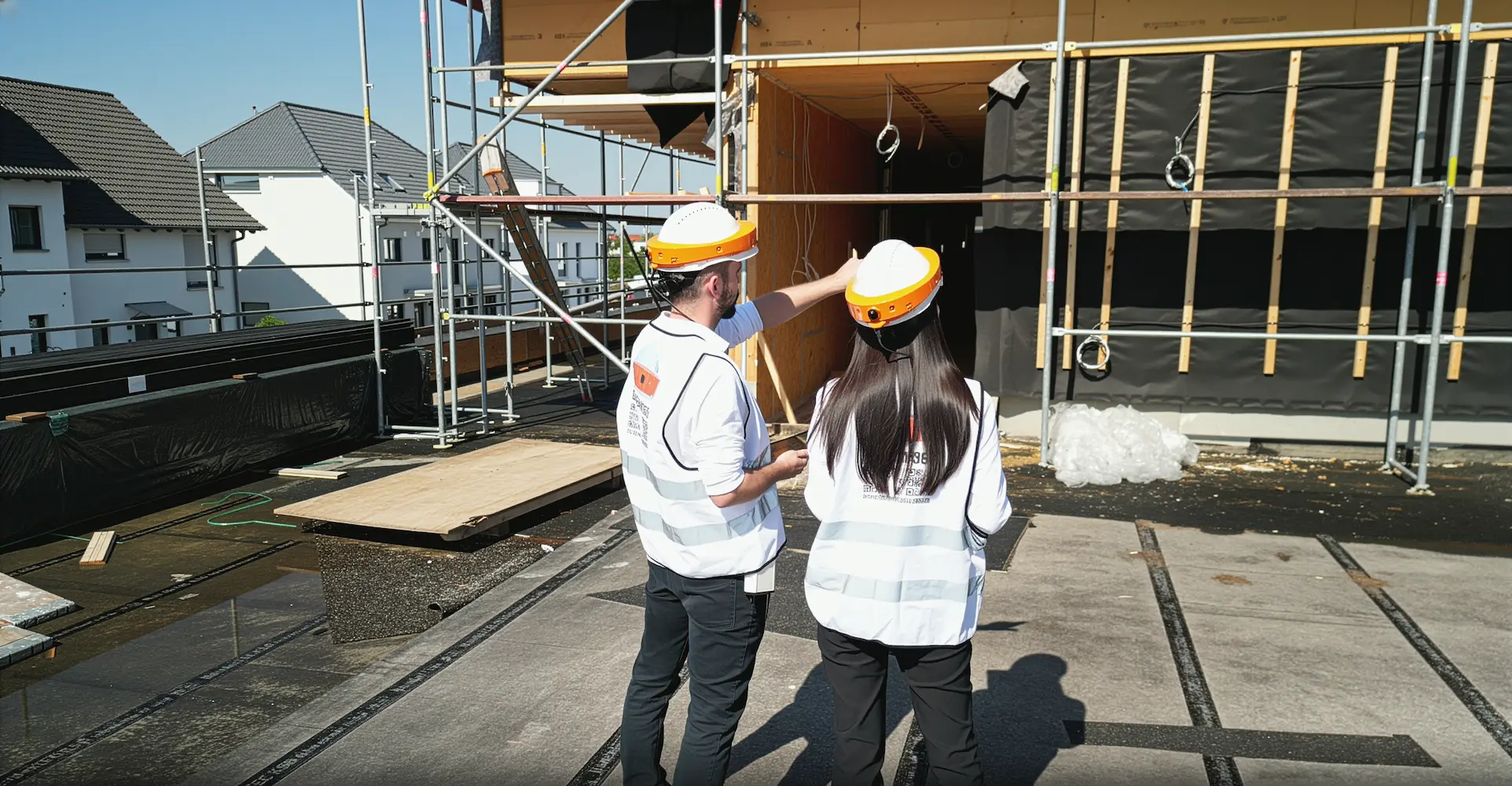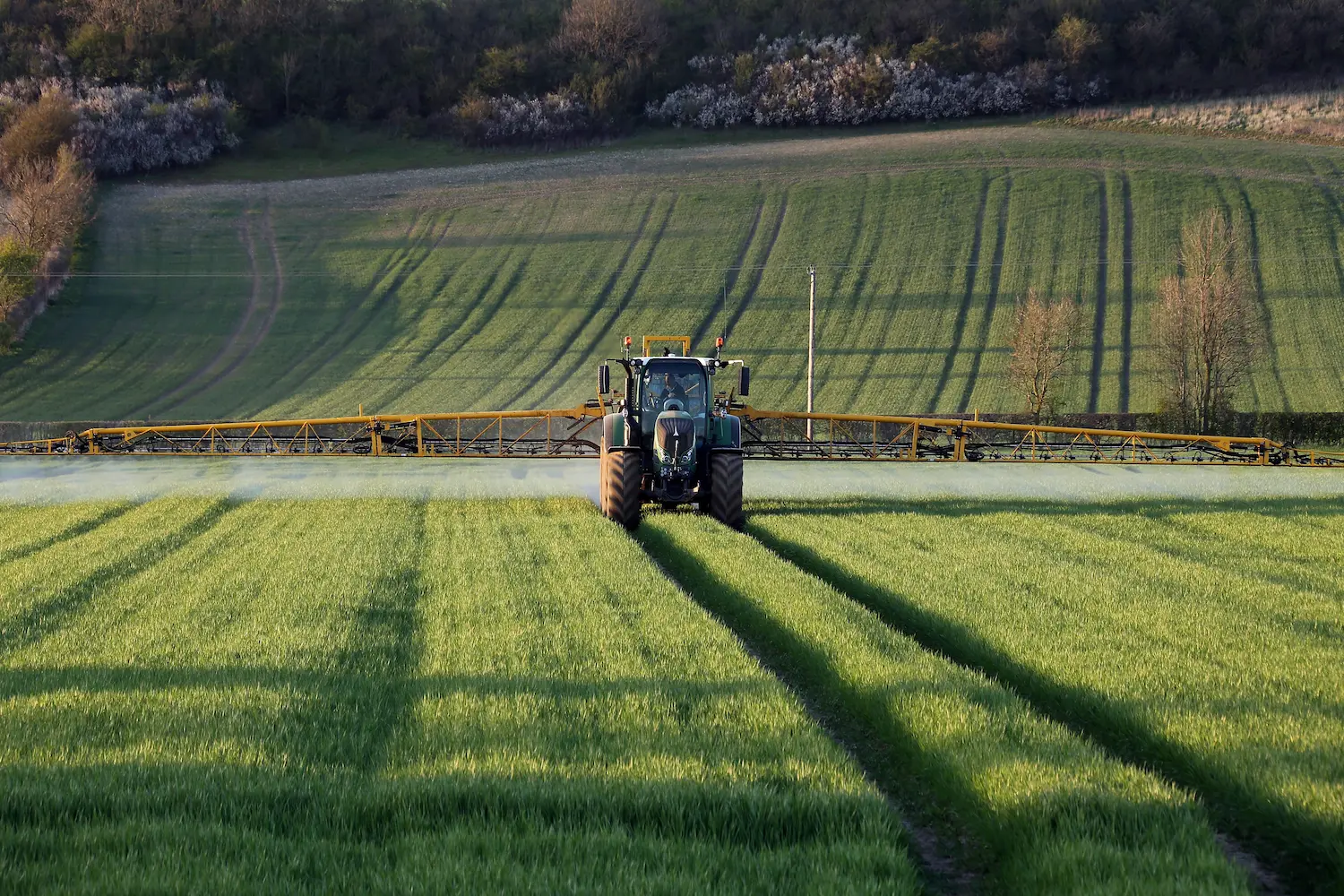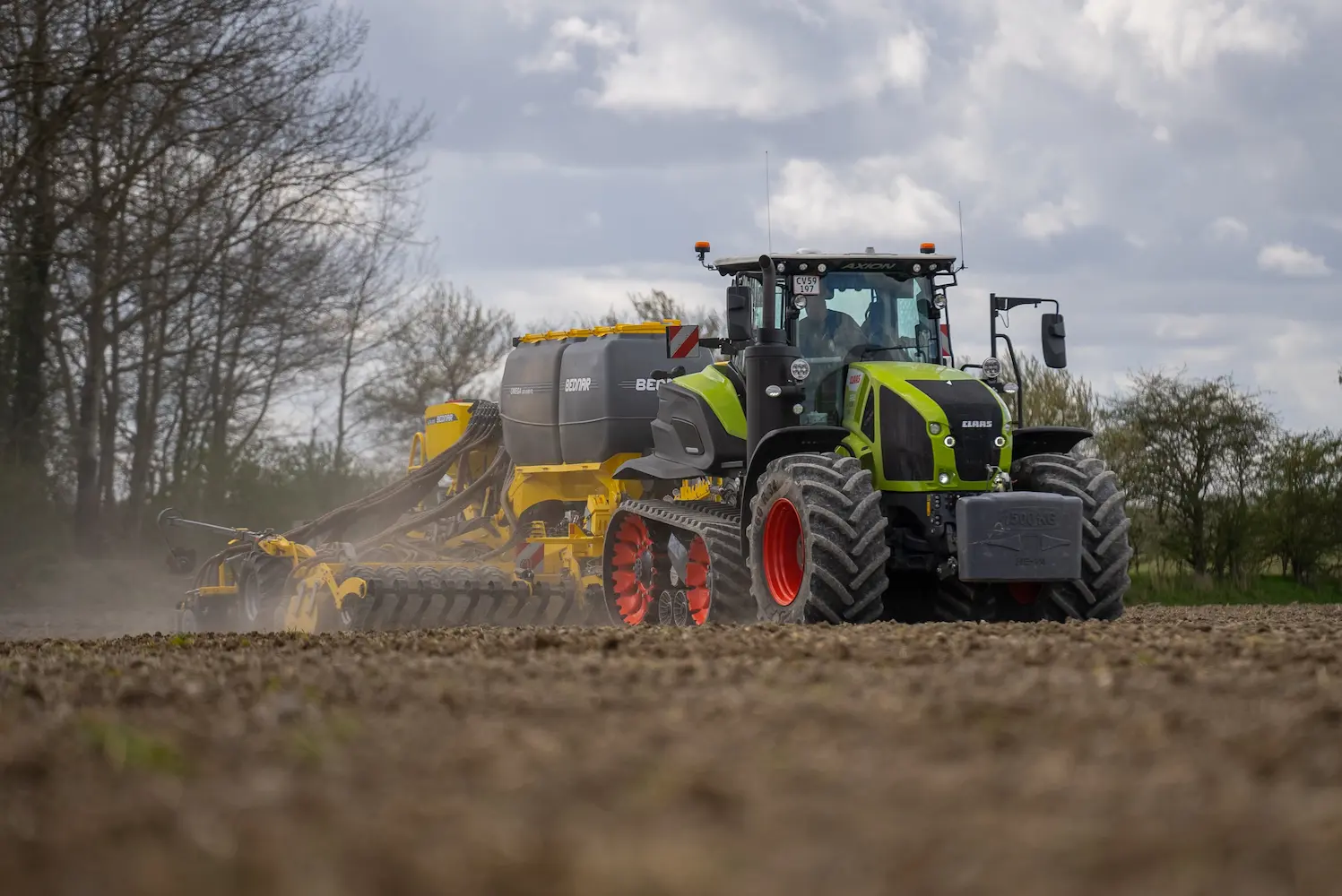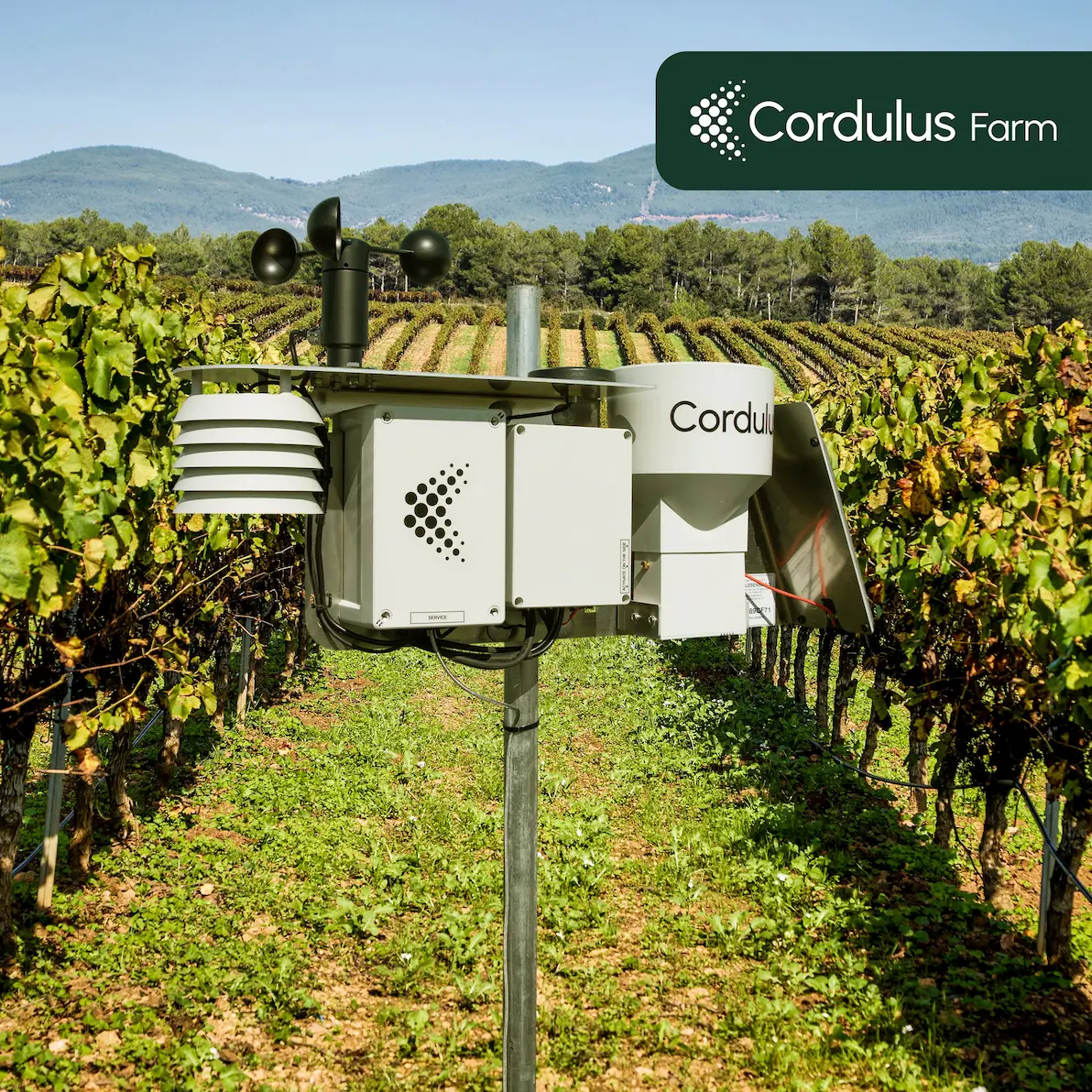Can a single weather station cover multiple fields effectively?
%20(1)%20(1).webp)
For farmers, having accurate weather information is critical to making the right decisions for crop health and farm efficiency.
But can a single weather station provide reliable data for multiple fields, or do you need a more targeted approach?
This guide explores whether one station is enough to cover expansive and varied farmland effectively, and explains what makes localized weather monitoring so valuable.
Discover how advanced weather station solutions can help deliver precise insights, empowering you to optimize your operations, protect yields, and manage risks with real-time, field-specific weather intelligence.
Understanding the capabilities of a single weather station
Farmers today need reliable, real-time weather data for their operations, but the question often comes up: can a single weather station deliver accurate data for multiple fields?
The answer depends both on how well it captures weather parameters such as temperature, humidity, rainfall, and wind, and the topography of the area you’re looking to cover.
This guide explores the critical differences in coverage, the role of weather station equipment, and the importance of data collection for optimal farm management.
How weather monitoring differs across agricultural fields
Weather monitoring across agricultural fields reveals how important spatial variability is in determining optimal farm outcomes. A single field weather station can act as the heart of many farm monitoring systems, consistently collecting weather data that enables farmers to track the fundamental meteorological parameters impacting crop health.
However, the capacity of one station to represent multiple fields depends on a range of factors, including microclimates, soil composition, topography, and the distance between fields. Though weather stations use advanced sensors and automatic measurement technology to enhance data collection efficiency, these elements can influence how applicable that data is beyond the immediate vicinity of the station itself.
The effectiveness of a weather station’s monitoring system hinges on measurement accuracy and the granularity of the sensor network. For example, if two fields lie on opposite slopes or have vastly different soil properties, the weather recorded by a single station may not accurately capture the specific conditions affecting all crops.
Meteorological station performance also varies with weather changes, microbursts of rain, sudden temperature shifts, or fog can impact one field while leaving another relatively untouched, even when those fields are only a few hundred meters apart. The need for precision makes it critical to assess each field’s unique microclimate.
Still, a central weather station can provide a robust framework for monitoring, especially if fields are close together and share similar terrain and soil types.
Farmers benefit most when they integrate automatic weather data from their station into a larger system, leveraging historical and live data to inform irrigation, planting, and spraying schedules. They can use these insights to optimize crops, react swiftly to adverse weather, and increase yields. With a modern field weather station, farms transform raw weather parameters into actionable intelligence.
Ultimately, investing in the right equipment, such as high-quality station sensors designed for agricultural monitoring, ensures better measurement accuracy and more reliable weather data for each field. Pairing this technology with robust data analysis tools amplifies the benefits, enabling farmers to harness every drop of rainfall or degree of temperature change.
For operations where fields are spread out or face different climatic conditions, supplementing the primary station with additional stations might be necessary to maintain comprehensive monitoring. This blended strategy positions you to thrive under changing weather and drives smarter, data-driven farming.
Factors that affect coverage: microclimates, topography, and distance
Accurate weather monitoring for agricultural operations is deeply influenced by the interplay of microclimates, topography, and the distance between fields. Even when deploying state-of-the-art weather stations, unique terrain features can result in notable variations in the weather across a farm.
Microclimates shaped by small-scale landscape differences, like a stand of trees or an elevation shift, mean that rainfall, temperature, humidity, and wind may be quite distinct from one field to the next. Topography, including slopes, valleys, and ridges, can create zones of different weather, affecting the representativeness of station data. And as the distance increases, the challenges in ensuring precise measurement accuracy across multiple fields grow.
Considering these environmental variables is essential when siting weather stations to support optimal data collection, crop management, and decision-making for every field, ensuring that monitoring efforts translate into better outcomes and higher yields.
The impact of wind and terrain on station data accuracy
The accuracy of data derived from a weather station operating across multiple fields depends greatly on the characteristics of wind and terrain in the area. Wind, often unpredictable by nature, interacts continuously with local terrain features, such as hills, valleys, tree lines, and built structures, to create dynamic microclimates.
A weather station placed in an open area might record average wind speeds and rainfall, while just a short distance away, a field shielded by a hedge or a slight hill could experience vastly different conditions.
A significant limitation of single-station data collection arises when trying to extrapolate measurements from one spot to a much more extensive system of outlying fields. Sensors that record temperature and humidity might capture the broader meteorological environment, but subtle shifts in terrain often mean different amounts of rain or wind patterns.
For instance, a valley could trap cold air, resulting in a lower temperature than a nearby plateau, and skew the data, making it less representative for crops growing at a higher elevation. Automated monitoring might miss such field-specific fluctuations, leading to less effective farm management if farmers don’t account for the underlying topography.
Wind is an especially critical factor for crop health and agricultural applications. Sudden gusts, persistent breezes, or winds caused by topographic features all greatly influence the local microclimate, impacting everything from soil moisture evaporation to spray drift of pesticides and even pollination efficiency. Therefore, it’s vital for field weather stations to be sited thoughtfully, prioritizing representative placement while also considering the impact of terrain.
Failure to factor these elements into the setup will almost inevitably produce unreliable weather station data if your goal is to cover a large area, reducing its usefulness for precise farm operation decisions.
If distance between fields is notable or the topography is varied, supplementing a single station’s data with additional monitoring points in key microclimates enhances overall coverage.
This approach allows for targeted data collection that takes into account wind and topographic influences, offering distinct advantages over relying solely on one central station. Ultimately, leveraging an advanced monitoring system that integrates the strengths of both automated station data and several stations across fields empowers agricultural professionals to generate higher-confidence, actionable insights.
By considering the interplay of wind, terrain, and field placement, farmers can ensure their investments in meteorological equipment, data analysis, and smart agriculture practices truly pay off, delivering reliable weather data that optimizes each crop, every season..
Evaluating the effectiveness of weather stations for multi-field operations
Ensuring consistent data collection across multiple fields is vital for any operation striving for agricultural excellence. Weather stations serve as the backbone of farm monitoring, enabling the systematic gathering of meteorological information in real time.
However, factors such as microclimates, topography, and sensor placement influence the station’s overall effectiveness and coverage.
Farmers must weigh whether one weather station, or several, best captures key parameters like temperature, humidity, wind, and rain across diverse areas. By analyzing real-world performance and exploring when to deploy additional stations, farms can optimize both monitoring accuracy and resource allocation for every field they manage.
Real-world scenarios: When to deploy additional stations
In practice, the effectiveness of a single weather station for multi-field operations often comes down to the unique characteristics of each farm and the environmental complexity between fields.
While a well-placed station can provide critical meteorological data, there are many cases where more stations dramatically enhance both coverage and data reliability. For example, if fields are separated by natural barriers such as hills or tree lines, or are situated in different soil types or elevations, a single station’s readings may not represent accurate field-specific conditions for a larger area.
This impacts daily operation decisions and reduces the value of monitoring in areas where temperature, humidity, or rainfall differs, sometimes even within short distances. Measurement accuracy becomes a core concern when fields span varied topographies, as the microclimates on a large or uneven property rarely align perfectly with data from just one monitoring point.
Beyond terrain, specific crops may have unique sensitivities to weather and soil conditions. For instance, a vineyard on a south-facing slope may demand more frequent and granular data collection compared to a grain crop planted in lowland fields nearby. In such cases, automatic weather stations strategically deployed in each microclimate improve the agricultural system’s overall performance by delivering targeted weather data, optimizing irrigation, pesticide application, and harvest timing.
Large, multi-field farms often face the challenge of maintaining consistent data across large distances. When the distance between fields increases, especially over uneven terrain, wind patterns, soil moisture, and rainfall accumulation can diverge significantly, limiting the usefulness of data from a single field weather station.
In these cases, deploying additional stations minimizes information gaps, enriching the broader dataset for analysis and forecast modeling. Some of these stations can automatically share data across a unified system, providing farm managers with comprehensive overview.
Smart farmers can also consider historical data to pinpoint recurring areas of difference. By tracking weather station logs and identifying trends where field-specific anomalies often arise, they can justify the placement of supplementary stations.
Ultimately, the decision to deploy additional weather stations comes down to the continuous review of system performance, sensor measurement accuracy, and the alignment of data collection with the farm’s diversity of microclimates. Farms that invest in a network of weather stations, complemented by carefully sited sensors and robust data communication, position themselves to thrive, maintaining both crop resilience and operational agility.
Whether comparing rain and temperature between fields, monitoring wind for safe pesticide use, or optimizing soil moisture for different crops, a tailored, multi-station approach is often the key to unlocking maximum agricultural potential.
Optimizing data collection for field-specific precision
Field-specific precision in agriculture relies on exceptional data collection and advanced monitoring practices, ensuring that every weather-related decision directly benefits crop yields and farm operations.
With the growing complexity of farm layouts and the variable nature of soil, topography, and microclimates, leveraging a weather station or a network of stations with precise sensors is fundamental to optimizing performance.
By integrating weather data into a unified system, farmers ensure high measurement accuracy, operational efficiency, and effective farm management across fields.
Practical tips for integrating weather data into daily farm management
- Choose high-quality equipment: Select weather stations and sensors with superior measurement accuracy to ensure the data you receive reflects the true conditions in the field.
- Strategically place stations: Place stations considering terrain, wind direction, and soil type to accurately pinpoint microclimate variations between fields.
- Integrate with farm software: Connect your monitoring system to farm management software. This allows you to view data on dashboards, receive real-time alerts, and automate tasks like adjusting irrigation schedules.
- Use historical data for planning: Analyze multi-year station logs to identify recurring patterns like frost risks or flood-prone areas. This allows for proactive management rather than reactive responses.
- Supplement single stations: If single stations show persistent anomalies, add more sensors or stations to get field-specific precision, especially on larger properties or those with varied topography.
- Maintain and calibrate regularly: Establish a routine maintenance schedule to ensure your equipment and sensors remain accurate over time.
- Create a network: Integrate multiple stations to gain a comprehensive, field-by-field view of all meteorological parameters across your property.
- Foster a data-driven culture: Train your staff to interpret weather data and use the monitoring system to make informed decisions about daily operations.
Choosing the right weather station setup for your fields
Selecting the optimal weather station setup for your fields is foundational to effective farm management, ensuring your monitoring system yields precise, field-relevant data for all agricultural operations.
The right equipment, coverage, and installation practices underpin the entire data collection process, directly influencing the accuracy with which temperature, humidity, rainfall, and soil conditions are measured and reported. From placing weather stations to ongoing monitoring and sensor calibration, each factor matters, not just for your primary field weather station but for any system of stations scattered across your property.
By following detailed guidelines and best practices, you can maximize measurement accuracy, streamline operation, and equip your farm for true meteorological insight.
Installation guidelines and monitoring best practices
The implementation of a robust weather station setup is as much an art as a science, with success hinging on a combination of equipment selection, careful siting, sensor calibration, and systematic monitoring.
When choosing the right weather station for your fields, pay close attention to the meteorological parameters most critical to your crops and local climate: temperature, humidity, rain, and soil conditions.
Begin the installation by thoroughly surveying your property to identify representative locations, spotting the field or areas with average exposure, minimum obstructions (like buildings or tall crops), and typical wind flow patterns. This ensures the field weather station’s coverage matches your farm’s true conditions rather than just isolated microclimates.
Selecting the right sensors is crucial, they should be capable of reliable, real-time data collection across required parameters and designed to withstand local weather extremes. Modern weather stations often come with automatic systems for continuous monitoring, providing live feeds on every environmental factor the farm needs.
Equipment durability, sensor measurement accuracy, and ease of integration with your central monitoring system all influence the station’s ongoing value.
Many advanced station kits offer modularity, letting farmers adapt sensor arrays to crop type, soil characteristics, and seasonal variation, an approach that longevity-proofs your data infrastructure as field conditions and operation requirements evolve.
Upon installation, ensure the sensors are mounted at standardized heights, typically 1.25 to 2 meters for temperature and humidity, with rain gauges placed in open, level spots free from vertical obstructions. Weather station hardware must be leveled, secured, and shielded from possible equipment interference, such as irrigation heads or moving farm vehicles.
It's equally important to ground the entire system to avoid data loss or sensor damage from lightning, a common weather risk in field environments. Ongoing monitoring establishes your system’s credibility.
Schedule regular calibration and maintenance routines, confirming that all equipment remains accurate and responsive. Automatically log every update or adjustment in your data collection software; this historical log supports field-by-field analysis, insurance, and operational compliance.
Weather data must remain uninterrupted and consistent, so always check battery backups, solar panel connections, and wireless signal strength if you’re relying on remote stations scattered across your farm.
Digital integration transforms your station's information into actionable insight. Use software that aggregates station data into a dashboard, breaking down temperature, rainfall, humidity, soil moisture, and wind events field by field. By linking your weather monitoring system with broader farm management tools, you ensure real-time alerts guide tasks, timing irrigation, protecting sensitive crops, or strategically planning equipment deployment.
Hyper-local weather readings not only improve current operations but also seed long-term planning by archiving data for post-season analysis or regulatory reporting. Best practices also recommend adapting your monitoring approach as seasons shift or as your crop mix changes.
Supplement foundational field weather station coverage with portable sensors or additional weather stations as necessary, especially in areas with significant elevation, changing soil profiles, or where persistent microclimates are detected through prior data.
Each new installation should follow the same rigorous guidelines to maintain measurement accuracy and seamless integration into your monitoring system. Ultimately, a disciplined focus on installation and monitoring best practices empowers your station data to be the foundation of every farm decision, from watering schedules to risk management. Optimized operation begins with precision weather data, achieved through meticulous, ongoing care for every weather station, sensor, and data workflow supporting your fields.
In conclusion, while a single weather station offers valuable data, its effectiveness diminishes when covering multiple, widely separated fields with differing microclimates. For truly reliable, actionable insights that optimize your operations and protect your crops, consider the precision of site-specific weather stations like those delivered by Cordulus.
Our hyper-local, real-time data and AI-powered forecasts ensure that every corner of your farmland receives the attention it deserves. Maximize your yield and efficiency, explore Cordulus solutions today for the most precise weather intelligence in agriculture.
Published:
August 13, 2025

.webp)

.webp)




%20(1).webp)








.webp)

.webp)




.webp)

_web.webp)






.webp)









